Block ice molds offer many wonderful uses for the home and business.
But how do you make one?
Making them seems easy; after all, they’re just frozen water, right?
On the contrary, it’s not as simple as many would think.
In this article I’m going to discuss ways to make block ice at home using household objects as molds, as well as list a few of the best block ice molds I’ve found available for purchase online.
But first, let’s discuss why you might want to create an ice block to begin with, and why it’s sometimes better than cubed or crushed ice.
Contents
Why Use Block Ice?
Certain circumstances call for specific types of ice. Block ice can do some things that crushed, cubed, or shaved ice can’t.
The benefits of it can outweigh whatever slight disadvantages it has.
The following are a few of the many things you can do with block ice:
- As food storage – since block ice melts slower, you can use them to store food and other perishable items
- As a portable refrigerator – you can take a block of ice with you on camping trips and still keep your food fresh
- To keep you cool – place a huge chunk of ice in front of an electric fan, and voila, instant air conditioner
- To make ice sculptures – although not everyone can do this, you can try bringing out the sculptor in you with a block of ice
- Make other forms of ice – you can make shaved and crushed ice from a block of ice, but never the other way around
Block Ice vs. Crushed or Cubed Ice
The debate whether block ice is better than crushed or cubed seems a bit futile.
These ice types serve their own purposes and offer something that others don’t. It all boils down to what your needs are.
When it comes to keeping food fresher for longer, block ice wins, hands down.
Block ice retains its temperature longer than crushed/cubed ice. It’s the best type of ice if you want to store food and beverages.
However, crushed or cubed ice cools food faster than block ice.
Crushed ice has a larger surface area, making it cool food faster than block ice. Plus, you can’t use a block of ice to cool your drinks, so in this scenario, cubed/crushed ice wins.
If you’re thinking about what type of ice to use for your coolers, the best answer would be to combine block ice and crushed/cubed ice.
You can layer the ice so that the block of ice is at the bottom where it won’t crush your food, but will still keep the cooler at a low temperature.
Then place crushed ice around your food items so that they’re in contact with ice to cool them down quickly.
How to Make a Home DIY Ice Block
When we think about block ice, it’s only natural to see them as, well, blocks of ice.
But block ice can come in different shapes and sizes.
As long as it will fit your cooler, any shape container will do.
Below are some examples of items found around the home that you can use as molds to make block ice:
- Plastic bottles
- Ice cream tubs
- Milk jugs
- Water pitchers
- Other plastic containers
Making ice blocks using these materials varies in technique. Let’s take a plastic bottle as an example.
You can freeze water using a plastic bottle. When you do this, you no longer need to take the ice out of the bottle.
When the block ice melts, it won’t fill your cooler with water and turn your food soggy.
In addition, you can drink the block ice turned cold water instead of throwing it away.
Make sure not to fill it to the brim with water as it expands when frozen.
When using ice cream tubs, you won’t have space problems as these are designed to fit in your freezer! If using other plastic containers, though, make sure they fit before filling them with water.
As with the bottles and jugs, leave room on top and do not fill the tub to the brim.
Be careful as plastic will expand when the water freezes. Filling it to the brim can result in excess water spilling on your freezer floor, making the container stick and hard to get out.
Also, it’s better if you put the container in the freezer first, then fill it with water. This will prevent water from sloshing all over your kitchen floor and your freezer.
The best materials to use when making block ice are plastic, metal, and rubber.
Glass will break and even shatter, so avoid using it.
Best Block Ice Molds
If you don’t want to use any home items and instead would like to purchase a proper block ice mold, you may at first glance think you’re out of luck.
I’ve spent many hours scouring the internet and couldn’t find any proper block ice molds available at an affordable price.
However, luckily, there are still many dual-purpose molds that you can purchase that will work as a block ice mold just fine.
The best option for this is a silicone mold, mainly because they’re malleable, which makes removing the ice from the mold extremely easy.
In addition, every single item listed below is advertised as 100% freezer safe, so there will be no issues using them as a block ice mold.
And finally, you can also use them to bake bread or make jelly if you like – what excellent value for money!
Let’s now dive into the reviews and pros and cons of these four block ice molds.
Tosnail 3 Pack Nonstick Silicone Mold
The Tosnail bread mold and loaf pan is perfect for making block ice. It can stand extreme temperatures of -40℃ to 230℃.
Pros
- Made with 100% food-grade silicone
- Freezer-safe
- Easy to clean
- Highly affordable
- Three in one pack
Cons
- A bit thin, may produce warped-shape ice
X-Haibei Large Cube Mold
This US food-grade silicone tray is an excellent block ice mold. It can resist temperatures of up to -40℃.
Pros
- Made with food-safe silicone
- Heat and cold resistant
- Can be used for making soap, jellies, ice, and even concrete
Cons
- Item colour is sent randomly
Traytastic! Silicone Large Mold
This multipurpose silicone tray can give you blocks of ice easily and instantly. It is non-toxic and freezer safe to -40℃.
Pros
- Safety-tested
- Dishwasher, oven, and freezer safe
- Features an easy-release design
Cons
- Has a thin bottom
Pen Kit Mall – 4x4x4 Cube Silicone Molds
Made especially for DIYers, this silicone mold is ideal for making block ice. It is inexpensive, durable, and versatile as it can be used for various materials and projects.
Pros
- Uses non-stick materials
- Temperature resistance of -40℃ degrees to 230℃
- Easy cleaning
Cons
- Not particularly high quality
Block Ice Molds: Conclusion
I hope you’ve enjoyed this article and found it informative!
After reading this article, you now know how to make block ice from either items in your home, or affordable silicone molds online, and what the benefits are of block ice over crushed or cubed ice.
Here are some related articles you may also enjoy:
Best Ice Maker That Keeps Ice Frozen

Hi there, I’m Richard Parker! I own two food truck businesses in Hawaii, selling snow cones, gelatos and frozen drinks. I’ve been working with ice makers for most of my professional career, and created this website to pass on my knowledge. I hope you enjoy!
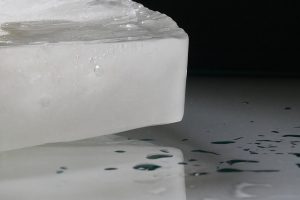
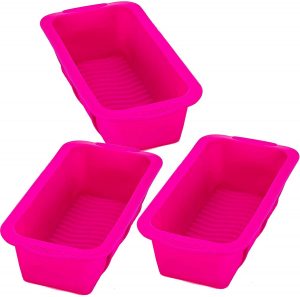
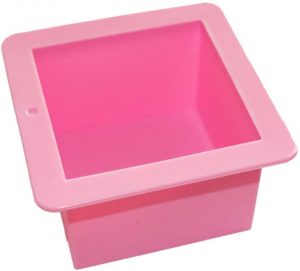
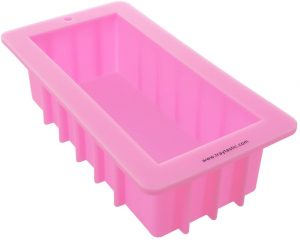
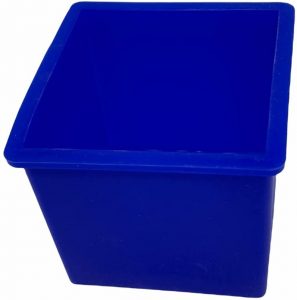
Leave a Reply